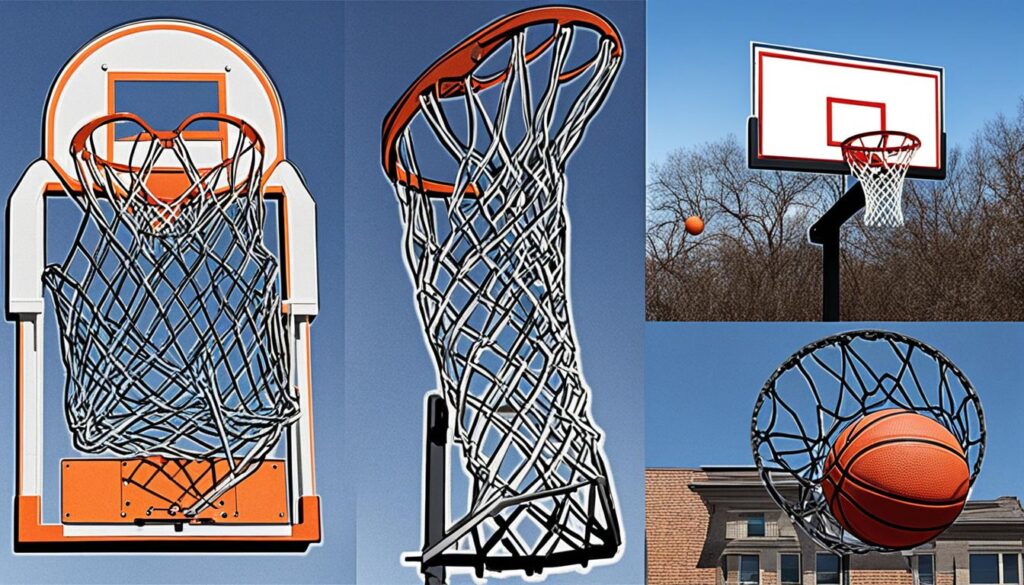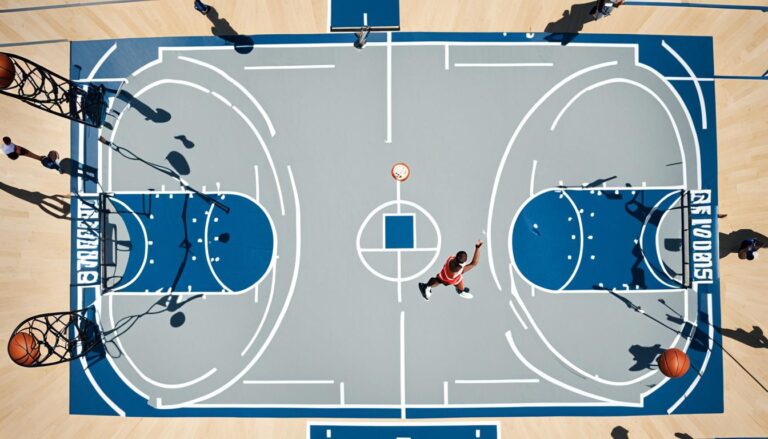Basketball has become one of the most popular and beloved sports in the world. But have you ever wondered where it all began? In this article, we will take a journey back in time to explore the origins of basketball, its fascinating history, and the development of the game we know and love today.
Key Takeaways:
- The game of basketball was invented in 1891 by James Naismith, a physical education instructor at the International YMCA Training School in Springfield, Massachusetts.
- Naismith created basketball as an indoor game to provide athletes with physical activity during the winter months.
- The first-ever basketball game was played in Springfield, Massachusetts, on March 11, 1892, marking a historic moment in the sport’s history.
- Basketball quickly gained popularity and became ingrained in American culture, spreading to colleges, high schools, and local communities.
- Dr. James Naismith’s contributions to basketball extended beyond the invention of the game, influencing rules, strategy, and coaching.
The Inception of Basketball by James Naismith
James Naismith invented basketball in response to the need for an indoor game that could provide physical activity for athletes during the winter months. Naismith wanted to create a sport that would be less injury-prone than football but still provide an engaging and competitive experience. His invention aimed to address the challenge of maintaining physical fitness and active participation during the winter season.
Addressing the Need for an Indoor Game
During the late 19th century, the lack of suitable outdoor sports during winter posed a significant challenge for athletes, especially in regions with harsh weather conditions. Traditional outdoor games like football were limited in their availability and often required modifications or were canceled altogether due to unfavorable weather conditions. James Naismith recognized the importance of physical activity and sought to develop a solution that would allow athletes to continue playing sports indoors.
Inspired by his background in physical education and his desire to create an engaging game, Naismith set out to invent a new indoor activity that would provide both recreation and exercise. His goal was to design a game that could be played and enjoyed by individuals of various ages and levels of physical fitness.
The Initial Concept and 13 Rules
In December 1891, James Naismith developed the initial concept of basketball. He used peach baskets as goals and a soccer ball as the playing ball. Naismith established 13 rules to govern the game, focusing on fair play and engaging gameplay.
“The ball may be thrown in any direction with one or both hands. The ball may be batted in any direction with one or both hands, but never with the fist.”
Naismith’s rules emphasized the importance of teamwork, good sportsmanship, and skillful ball handling. The original rules of basketball set the foundation for the modern game that we know today. Despite some modifications and adaptations over the years, the core principles introduced by Naismith remain intact.
First Game Played in Springfield
The first-ever basketball game was played on March 11, 1892, at the International YMCA Training School in Springfield, Massachusetts. The game served as a demonstration of Naismith’s newly invented sport. The teams consisted of nine players each, and they showcased their skills under the original 13 rules created by Naismith.
This historic basketball game marked the beginning of a new era in sports, as it ignited the passion and curiosity of the players and spectators alike. The Springfield basketball game set the stage for the future development and evolution of basketball as a popular and widely played sport worldwide.
Basketball Origin: Early Iterations and Modifications
From its humble beginnings with peach baskets as goals, basketball has undergone significant changes in its equipment. The evolution from peach baskets to modern hoops allowed for a more dynamic and fast-paced game. Let’s explore the development of basketball equipment and how it contributed to the sport’s evolution.
Evolution from Peach Baskets to Modern Hoops
In the early days of basketball, peach baskets were used as goals. Players had to manually retrieve the ball from the basket after each successful shot, which often interrupted the flow of the game. To address this issue, modifications were made to the baskets to allow for the easy release of the ball. The addition of an open-ended net replaced the closed bottom of the basket, enabling the ball to pass through smoothly.

Over time, the design of basketball hoops continued to evolve. From wooden backboards to durable, breakaway rims, modern hoops are designed to withstand the fast-paced and physical nature of the game. These advancements have not only improved the playing experience but have also enhanced safety for players.
Adaptations from Soccer Ball to Basketball
In the early stages of basketball, a soccer ball was used as the playing ball. However, the use of a round, bouncy ball meant that it was difficult to control and handle, especially on the smooth indoor court surfaces. To address this, modifications were made to create a ball specifically designed for basketball.
The modern basketball features a unique pebbled texture that provides players with a better grip and control. The size and weight of the ball have also been standardized to ensure consistency across the game. These adaptations have significantly contributed to the development of basketball skills and the overall gameplay.
The evolution of basketball equipment, from the transformation of peach baskets into modern hoops to the creation of a specialized basketball ball, has played a crucial role in shaping the sport we know today. These changes have not only improved the playing experience but have also contributed to the growth and popularity of basketball worldwide.
| Equipment | Description | Impact |
|---|---|---|
| Peach Baskets | Used as goals in early basketball | Manual retrieval of the ball; interruption of gameplay |
| Modern Hoops | Evolved from peach baskets | Easier release of the ball; improved playing experience |
| Soccer Ball | Initially used as the playing ball | Difficult to control and handle |
| Specialized Basketball Ball | Designed specifically for basketball | Better grip and control; enhanced gameplay |
Basketball’s Rapid Assimilation into American Culture
Basketball quickly became ingrained in American culture, gaining popularity at colleges, high schools, and in local communities. The sport’s assimilation into American culture had a profound impact on its growth and development.
From its humble origins, basketball captured the hearts of Americans and became a beloved sport woven into the fabric of society. It offered a thrilling combination of athleticism, teamwork, and strategy that resonated with players and fans alike.
Colleges and universities played a significant role in the assimilation of basketball into American culture. The sport found its way onto campuses, where it became an integral part of college life. Intercollegiate competitions and rivalries sparked widespread interest and support, contributing to the growing popularity of basketball.
High schools also embraced basketball, making it a staple of physical education programs and interscholastic competitions. The accessibility and inclusivity of the sport allowed it to reach a wider audience, further fueling its popularity.
Basketball’s assimilation into American culture was not limited to formal institutions; it spread to local communities as well. Parks, playgrounds, and rec centers became gathering places for basketball enthusiasts of all ages. Pickup games and neighborhood tournaments became social events, promoting a sense of community and camaraderie.
The emergence of professional basketball leagues, such as the National Basketball Association (NBA), further solidified the sport’s place in American culture. The NBA showcased the talents of exceptional players and provided thrilling, high-level competition that captivated fans nationwide.
“Basketball is my passion. It’s not just a game; it’s a way of life. It brings people together, creates memories, and inspires the next generation of athletes.” – LeBron James
Today, basketball has become one of the most popular sports in the United States. Its assimilation into American culture has paved the way for the sport’s continued growth and evolution. Basketball courts can be found in nearly every corner of the country, from inner-city neighborhoods to suburban parks.
Whether played professionally, collegiately, or recreationally, basketball remains a powerful symbol of American athleticism, teamwork, and competitive spirit. Its presence in movies, music, and advertising further reinforces its status as a cultural icon.
Basketball’s rapid assimilation into American culture has shaped its identity and propelled it to the forefront of sports entertainment. As the sport continues to evolve, its connection to American culture remains strong, uniting generations of fans and inspiring future athletes.

Dr. James Naismith’s Pioneering Contributions
Dr. James Naismith, the inventor of basketball, left a profound impact on the sport that stretches far beyond its creation. His innovative ideas and teachings have shaped the development of basketball strategy, rules, and coaching, leaving behind a lasting legacy. Naismith’s contributions have played a crucial role in the evolution and growth of basketball.
Naismith’s pioneering mindset and creativity led to the invention of basketball, revolutionizing the world of sports. His vision for an indoor game that provided both physical activity and entertainment during the winter months sparked the creation of a game that has become a global phenomenon.
“The invention of basketball was not an accident. It was developed to meet a need. Those boys simply would not play ‘Drop the Handkerchief.'” – Dr. James Naismith
Naismith’s 13 original rules, designed to promote fair play and enjoyable gameplay, formed the foundation of modern basketball. These rules laid the groundwork for the structure and integrity of the sport as it continued to evolve.
Furthermore, Naismith’s contributions extended beyond the court. His emphasis on the values of sportsmanship and teamwork influenced the development of basketball culture, teaching players and coaches the importance of these qualities in achieving success both on and off the court.
Today, the impact of Naismith’s contributions is evident in the continued growth and popularity of basketball. His invention has transcended boundaries and united individuals from all walks of life, becoming a language that connects people across the globe.
In recognition of his pioneering spirit and immense legacy, Naismith’s name is forever etched in the annals of basketball history. His innovative ideas and unwavering dedication have propelled the sport forward and continue to shape its future.
The Global Expansion of Basketball
The Young Men’s Christian Association (YMCA) played a crucial role in spreading basketball beyond the United States. The organization introduced the sport to various countries, contributing to its global expansion. The YMCA’s mission to promote physical activity and community engagement provided the perfect platform for basketball to gain international recognition and popularity.
During the early 20th century, YMCA officials and instructors traveled around the world, establishing YMCA branches in different countries and bringing basketball with them. The YMCA’s commitment to sports and physical education made basketball a central activity within their programs, exposing people from diverse backgrounds to the game.
In addition to introducing basketball, the YMCA also played a significant role in standardizing the rules and establishing a universal framework for the sport. YMCA officials collaborated with other basketball leaders, including James Naismith, to develop a standardized set of rules that would be used globally. This unified approach set the foundation for basketball’s growth and development internationally.
The U.S. Army and Basketball during World War I
During World War I, basketball became a popular recreational activity among U.S. soldiers. As soldiers faced the challenges of war, basketball provided a much-needed escape and a sense of camaraderie. The sport was played in military training camps, on ships, and even on the battlefields during periods of downtime.
Basketball’s influence on soldiers went beyond entertainment. The game promoted physical fitness, teamwork, and discipline, all of which were essential qualities for soldiers. Playing basketball helped boost morale and provided soldiers with a sense of normalcy amidst the chaos of war.
International Basketball Matches and the Growth of FIBA
International basketball matches played a significant role in the global growth of the sport. These matches helped foster international competition and led to the establishment of the International Basketball Federation (FIBA). FIBA’s formation in 1932 marked a pivotal moment in basketball history, as it provided a platform for countries around the world to come together and organize international tournaments.
With FIBA’s establishment, international basketball gained greater structure and recognition. International competitions such as the Olympic Games and the FIBA World Cup showcased the talent and skill of basketball players from different nations. These events not only fueled the popularity of the sport but also contributed to its continuous development and global reach.
Today, basketball is one of the most widely played and watched sports globally, with millions of people participating and following the game. The YMCA’s contributions to basketball’s global expansion, the sport’s popularity among U.S. soldiers during World War I, and the growth of international basketball matches through FIBA have all played crucial roles in the global growth and influence of basketball.
Historical Milestones of Basketball Evolution
Throughout its history, basketball has witnessed numerous milestone moments that have shaped the sport into what it is today. From its humble beginnings in Springfield, Massachusetts, to its global prominence, basketball has experienced significant events that have left a lasting impact. Let’s explore some of the most significant moments in basketball history and the evolution of the game.
“Basketball really had its beginnings in Springfield, which is important for the city. It brought this young Canadian immigrant to hone, if you will, his teaching skills and come up with this new game,” said Philip Ralph, executive director of the International Basketball Hall of Fame.
One of the earliest milestones in basketball history was the establishment of the National Basketball Association (NBA) in 1946. The NBA has since become the premier professional basketball league in the world, showcasing the talents of some of the greatest players to ever grace the court.
Another significant moment in basketball history occurred in 1967 when the American Basketball Association (ABA) was established. The ABA brought innovation to the game with its three-point line and introduced some iconic teams, such as the Indiana Pacers and the San Antonio Spurs.
In 1992, the “Dream Team” featuring basketball legends like Michael Jordan and Magic Johnson competed in the Summer Olympics, marking a turning point in international basketball. This team showcased the dominance of American basketball and helped popularize the sport around the globe.
One of the most celebrated milestones in recent basketball history was the Cleveland Cavaliers’ comeback in the 2016 NBA Finals. Down 3-1 in the series against the Golden State Warriors, the Cavaliers made a historic comeback to win the championship, led by LeBron James.
These are just a few examples of the many significant moments that have shaped the history of basketball. From the establishment of major leagues to iconic games and remarkable comebacks, basketball continues to captivate fans worldwide.
| Year | Event |
|---|---|
| 1946 | Establishment of the NBA |
| 1967 | Establishment of the ABA and introduction of the three-point line |
| 1992 | The “Dream Team” wins gold at the Summer Olympics |
| 2016 | Cleveland Cavaliers’ historic comeback in the NBA Finals |
These milestones and many others have shaped basketball into the beloved sport it is today. As the game continues to evolve and new stars emerge, the rich history of basketball will always be cherished and celebrated.
Conclusion
Dr. James Naismith’s legacy continues to be felt in the world of basketball. His invention of the sport in 1891 has transformed it into a global phenomenon that is beloved by millions. Naismith’s innovative thinking and commitment to promoting physical activity during the winter months led to the creation of an indoor game that has captivated athletes and fans alike for over a century.
The enduring legacy of basketball is a testament to Naismith’s vision. The sport has evolved and grown in popularity, becoming deeply ingrained in American culture and spreading to every corner of the globe. From its humble beginnings with peach baskets and a soccer ball, basketball has transformed into a dynamic and fast-paced game played with modern hoops and specially designed balls.
As basketball’s ongoing journey continues, the future of the sport looks incredibly bright. With advancements in technology and increased global participation, basketball will undoubtedly continue to captivate fans and inspire athletes for generations to come. Dr. James Naismith’s lasting impact on the sport and his role as the founding father of basketball ensure that his vision lives on and evolves, shaping the future of this beloved game.
FAQ
When and where was basketball invented?
Basketball was invented in 1891 by James Naismith, a physical education instructor at the International YMCA Training School in Springfield, Massachusetts.
Why was basketball invented?
James Naismith invented basketball as an indoor game to keep athletes active during the winter months, providing an alternative to outdoor sports like football.
What were the original rules of basketball?
James Naismith established 13 rules to govern the game of basketball. These rules included not running with the ball, no contact between players, and throwing the ball into peach baskets as goals.
Where was the first-ever basketball game played?
The first-ever basketball game was played in Springfield, Massachusetts, at the International YMCA Training School on March 11, 1892, where James Naismith taught.
How did basketball equipment evolve?
Basketball equipment evolved from using peach baskets as goals to modern hoops, allowing for a more dynamic and fast-paced game.
What ball was originally used in basketball?
In the early stages of basketball, a soccer ball was used as the playing ball. However, modifications were made over time to create a ball specifically designed for basketball.
How did basketball become popular in American culture?
Basketball quickly became ingrained in American culture, gaining popularity at colleges, high schools, and in local communities, becoming a beloved sport in American society.
What were Dr. James Naismith’s contributions to basketball?
Dr. James Naismith, the inventor of basketball, made significant contributions to the sport beyond its creation, including influencing basketball strategy, rules, and coaching.
How did the YMCA contribute to the global expansion of basketball?
The Young Men’s Christian Association (YMCA) played a crucial role in spreading basketball beyond the United States, introducing the sport to various countries and contributing to its global expansion.
What was the relationship between the U.S. Army and basketball during World War I?
During World War I, basketball became a popular recreational activity among U.S. soldiers, providing a sense of camaraderie and entertainment during challenging times.
What was the impact of international basketball matches on the sport’s growth?
International basketball matches fostered international competition and led to the establishment of the International Basketball Federation (FIBA), contributing to the global growth of the sport.
What are some significant milestones in basketball history?
Throughout its history, basketball has witnessed numerous milestone moments that have shaped the sport into what it is today.
What is the enduring legacy of Dr. James Naismith and the ongoing journey of basketball?
Dr. James Naismith’s legacy continues to live on in the sport he invented. Basketball has become a global phenomenon with a bright future ahead.













+ There are no comments
Add yours